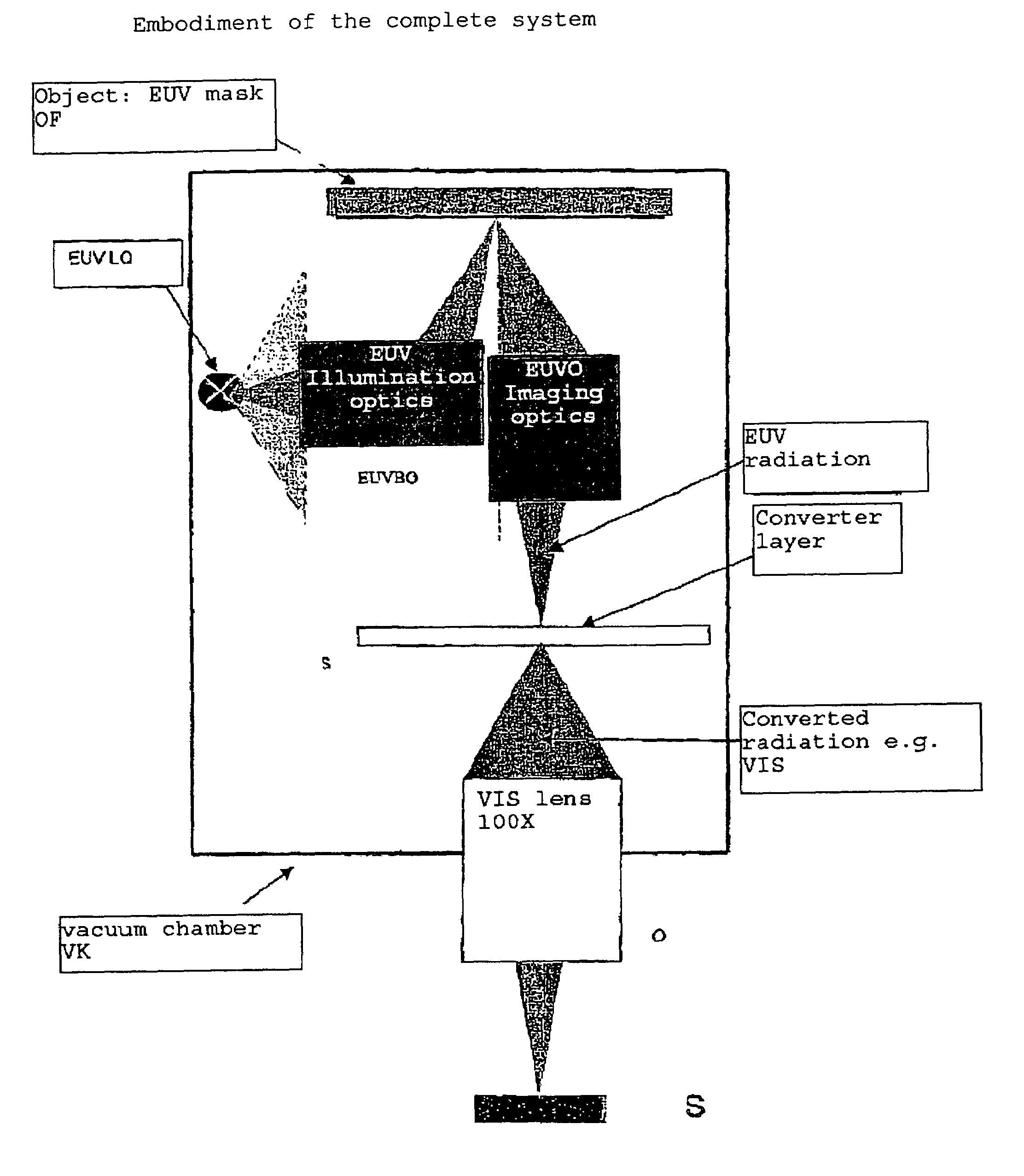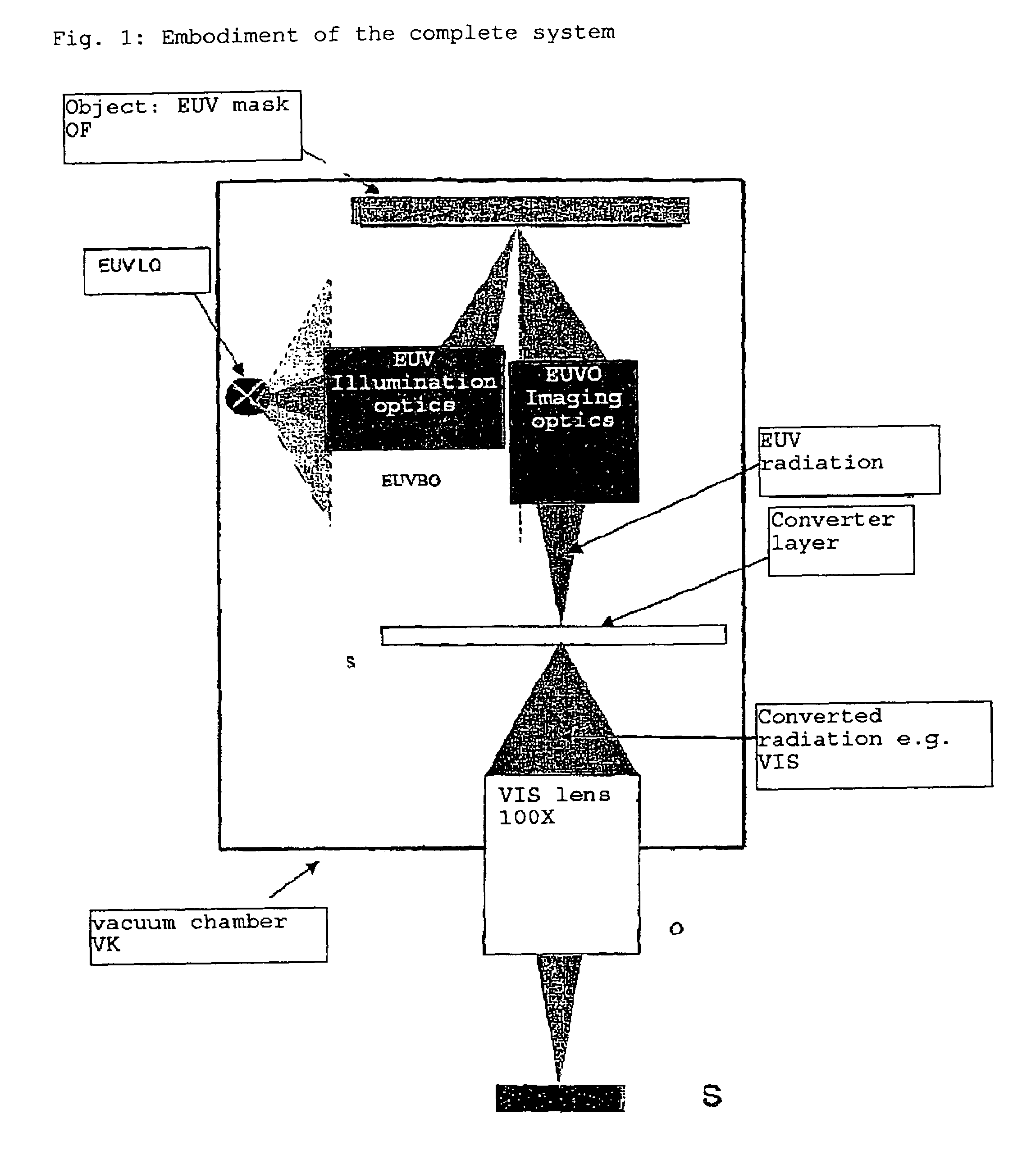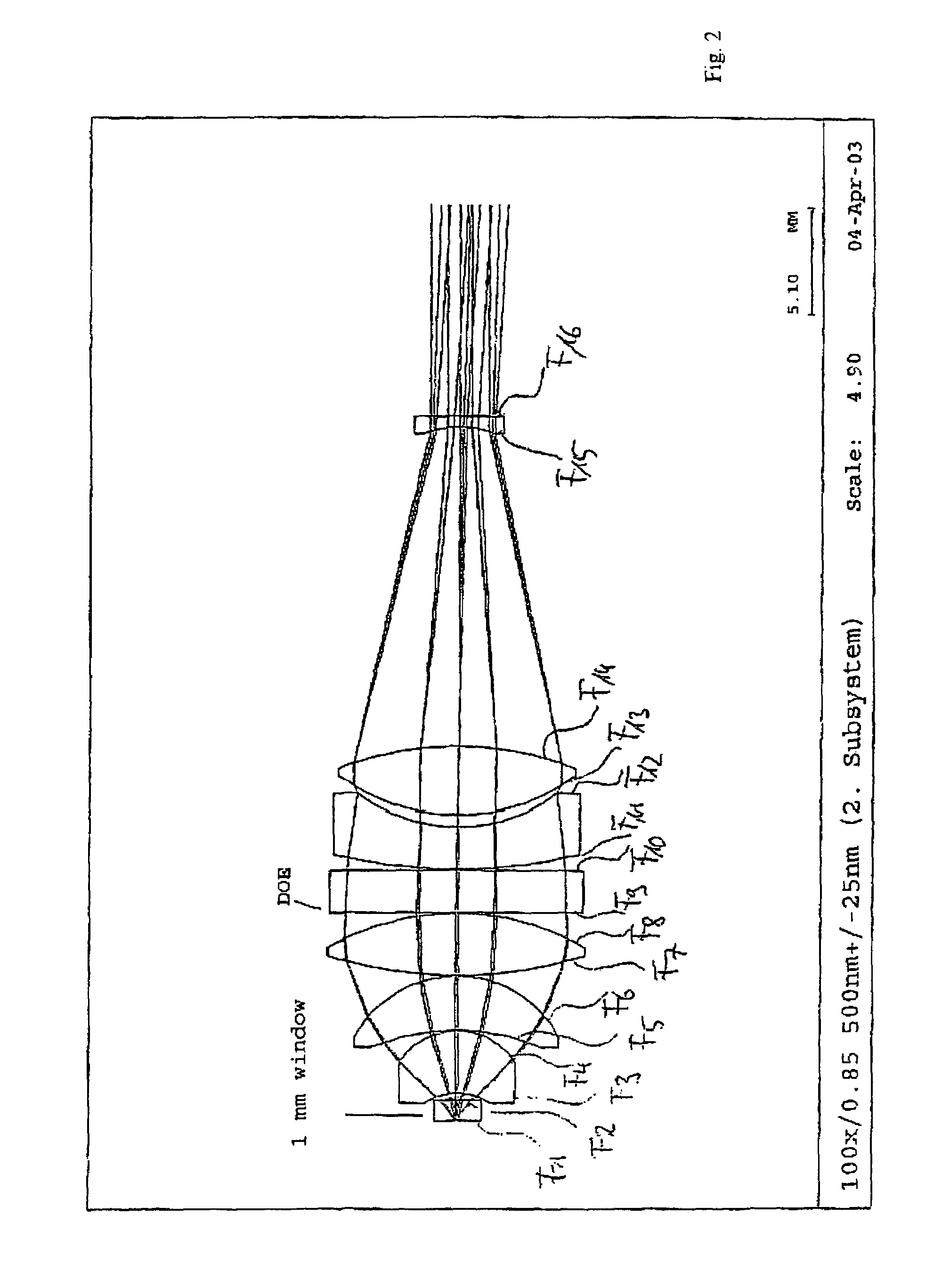Arrangement for inspecting objects, especially masks in microlithography
a microlithography and mask technology, applied in the field of microlithography and to devices for inspecting objects, can solve the problems of high contamination risk of devices disposed in vacuum chambers, high risk of contamination of devices, and optical elements exposed to radiation rich in energy, especially euv radiation, and achieve superior optical imaging quality
- Summary
- Abstract
- Description
- Claims
- Application Information
AI Technical Summary
Benefits of technology
Problems solved by technology
Method used
Image
Examples
Embodiment Construction
[0014]In describing preferred embodiments of the present invention illustrated in the drawings, specific terminology is employed for the sake of clarity. However, the invention is not intended to be limited to the specific terminology so selected, and it is to be understood that each specific element includes all technical equivalents that operate in a similar manner to accomplish a similar purpose.
[0015]The present invention is explained more fully on the basis of FIG. 1.
[0016]The object field OF illuminated using an EUV source of light LQ via illuminating optics EUVBO is reproduced on a scintillator S by means of EUV optics EUVO. The scintillator converts the image of the EUV wavelength range into an image of a long-wave range, which is then reproduced on the sensor using an image lens O (i.e. micro lens). In doing so, the imaging lens / the scintillator is used according to the invention in one of the configurations described above.
[0017]The lens O is illustrated schematically. A f...
PUM
| Property | Measurement | Unit |
|---|---|---|
| wavelength | aaaaa | aaaaa |
| optical images | aaaaa | aaaaa |
| optical imaging quality | aaaaa | aaaaa |
Abstract
Description
Claims
Application Information
 Login to View More
Login to View More - R&D
- Intellectual Property
- Life Sciences
- Materials
- Tech Scout
- Unparalleled Data Quality
- Higher Quality Content
- 60% Fewer Hallucinations
Browse by: Latest US Patents, China's latest patents, Technical Efficacy Thesaurus, Application Domain, Technology Topic, Popular Technical Reports.
© 2025 PatSnap. All rights reserved.Legal|Privacy policy|Modern Slavery Act Transparency Statement|Sitemap|About US| Contact US: help@patsnap.com



